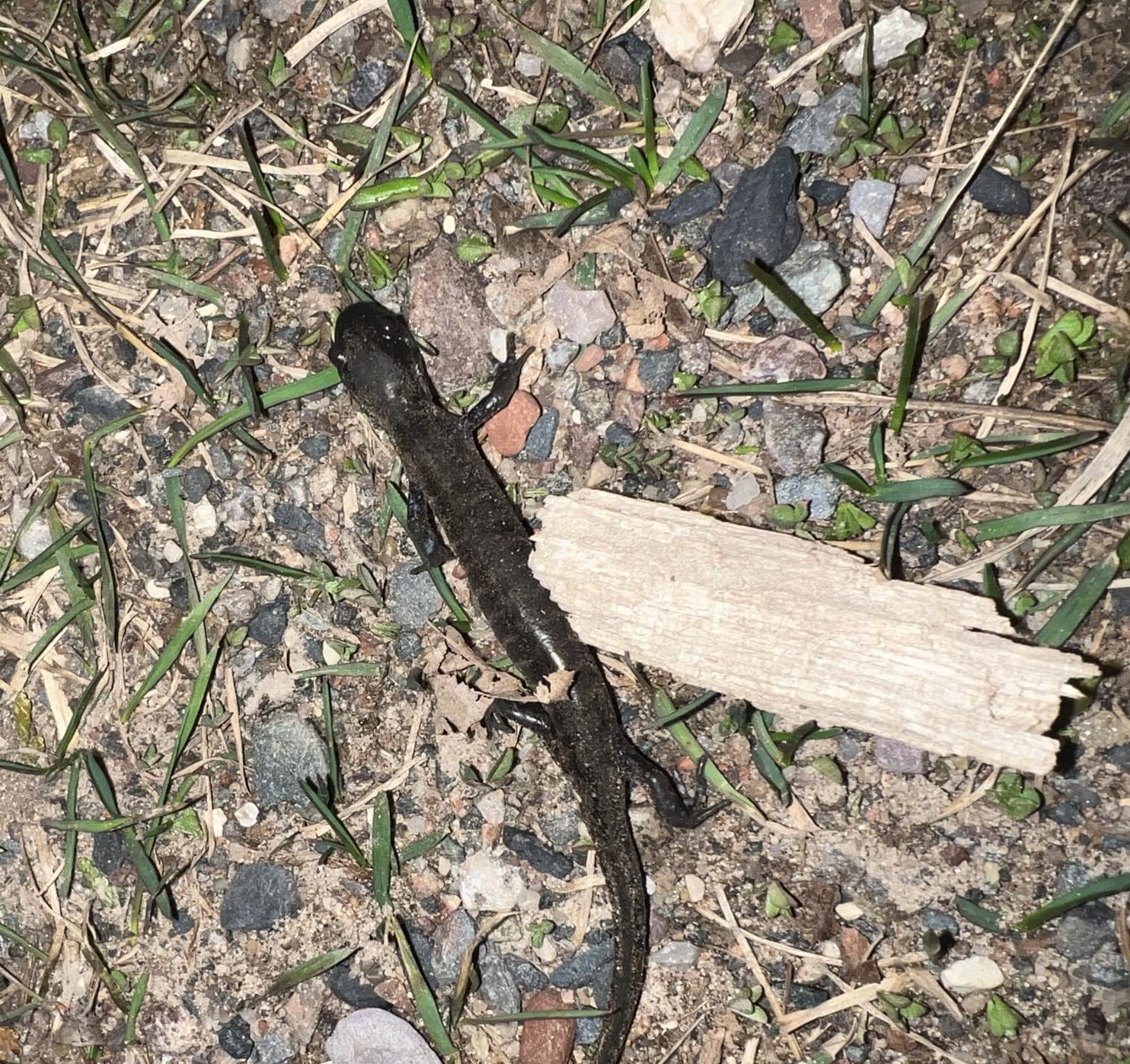When blue-spotted salamanders (Ambystoma laterale) began to migrate in late March, hundreds of them were seen crossing the roads of Presque Isle. To protect the herds as they cross, road closures were the first step. From there, much more was to come; a community of NMU students, staff and Marquette residents formed to protect, study and understand the amphibians.
“From a scientific perspective, the salamanders are interesting because they are extremely well studied for their genetics, which is biologically very interesting, but we actually do not know a lot about their ecology,” said biology professor Jill Leonard, study designer and faculty leader of the program. “This is mostly because they are challenging to study because of their subterranean habitat. That makes them interesting too.”
According to Leonard, the blue-spotted salamanders spend the majority of their lives in soil. They are carnivores that play an important role in the food chain and may dig their own burrows underground. The salamanders are rarely seen throughout winter but begin to emerge in the spring. When they do, they walk towards ponds to reproduce. This is what many students are seeing at Presque Isle Park in the nighttime.
There are two student groups of Leonard’s salamander program; the ‘Salamander Stewards,’ and ‘Team Sallie.’ The stewards are focused on community outreach and education. They work to inform those searching for salamanders and ensure they aren’t harming them as they look.
Team Sallie, however, collects data on the salamanders such as the amount, timing, weather and migration of other animals. Sampling and data collection occur nightly and sometimes throughout the day. This allows the group to “characterize the timing of the migration.” Leonard receives the help of four student leaders in the project.
“I felt some responsibility to the animals themselves, so that was part of [why I got involved]. But I also saw how excited the public was about being able to see these animals and learn about them,” Leonard said. “I view keeping this project going as a service to my community. I also saw it as a great educational opportunity for my students. Many of my students are interested in natural resources and conservations and having them participate in this project allows them to get experience.”
Leonard’s role in the project is fundamental, but the dedication of her student leaders is also very important. Lots of work was put into their training and preparation for the project. According to Leonard, she starts preparing to train the students early on in the semester. She also has to make sure that the groups have the permits and permissions they need, and she works to collaborate with Moosewood Nature Center and the Superior Watershed Partnership.
One of the two student leaders for Team Sallie is undergraduate student Anna Hill. Originally, she joined Dr. Leonard’s lab as a freshman fellow and was asked to help out with the salamanders’ data collection. From there, the group was formed.
“Salamanders are one of the most interesting species I have ever worked with. They are incredibly ecologically interesting, and we know so little, especially about blue-spotted salamanders (BSS),” Hill said. “Designing a research project has been one of the most challenging but rewarding things I’ve ever done. We’ve been looking at the impacts of artificial light on BSS. So far we’ve found that flashlights are not having a serious effect but that they do prefer darkness when given the option.”
Hill has found much worth in the project and is passionate about its growth. With the work that she has done, she hopes to see the program grow further.
“As one of the original co-leaders, I’m very fortunate to get to see how well this project has done,” Hill said. “This project has had a major impact on my life and opportunities I’ve been given. I hope to see other students continue this project long after I’m gone, and I can’t wait to see where they run with it.”








